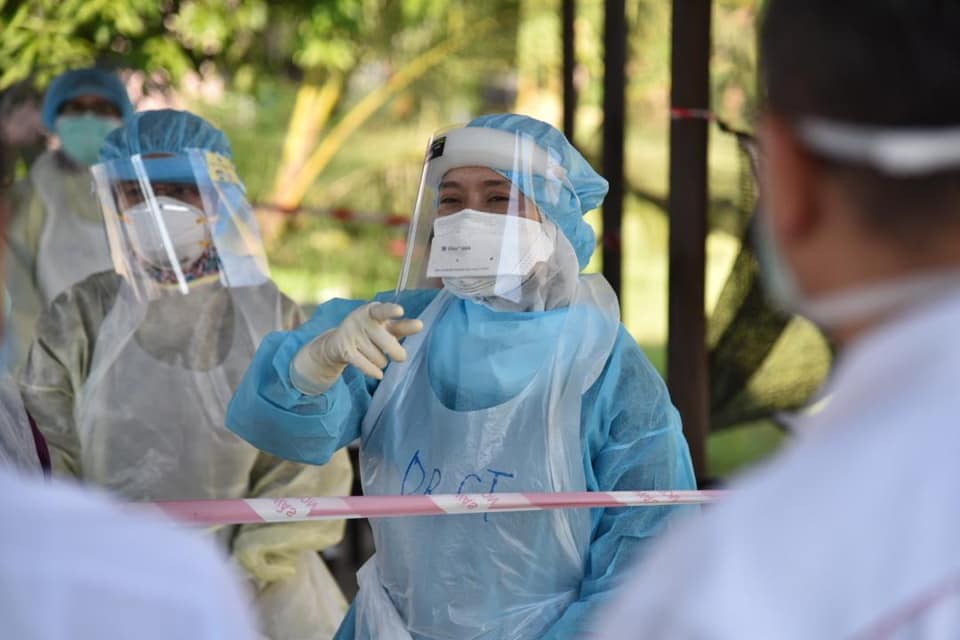“Covid-19 did not cause any deaths in Malaysia in one month during Pakatan Harapan’s (PH) administration after the first case was detected in January”: Dzulkefly Ahmad, the former Minister of Health, said on 24 August 2020. “There were no fatalities until we left Putrajaya”.
This was a rebuttal to what Minister of International Trade and Industry Mohamed Azmin Ali said on the campaign trail in Slim, Perak, that “more Malaysians would have died from coronavirus if PH were still in power”.
In this season of political sandiwara, Malaysians mudah lupa? What is the true depoliticised narrative of Covid-19 in Malaysia?
Malaysia is one of a few countries whose early hospitalisation and stringent epidemic control measures have kept Covid-19 infections and deaths relatively low. As of 26 August 2020, Malaysia (population 32.7 million) had 9,296 confirmed cases with 125 deaths (1.34% case fatality rate [CFR]), compared to Japan (population 125.96 mil) with 64,752 cases, 1,230 deaths (1.90% CFR); USA (population 328.24 mil), 5.9 million cases, 182,000 deaths (3.08% CFR); and Turkey (population 82 mil), 263,000 cases, 6,183 deaths (CFR 2.35%).
Please take note of our low case fatality rate. Worldwide, Covid-19 CFR is approximately 3.41%. 29.5% of all cases are non-Malaysians. As of 27 August, 2,742 were positive out of 76,424 foreigners tested, with six deaths.
Malaysia continues to perform 0.3 tests /1,000 population with a test positivity rate of 0.2%, compared to Japan 0.2/ 1,000 with 4.5% positivity rate, and USA 2.0/1000 with positivity of 6.3%.
This test positivity rate is a good indicator for how adequately countries are testing because it indicates the level of testing relative to the size of the outbreak. To be able to properly monitor and control the spread of the virus, countries with more widespread outbreaks need to do more testing.
According to the criteria published by the World Health Organization (WHO) in May, a positive rate of less than 5% is one indicator that the epidemic is under control in a country. In countries with a high test positive rate, the number of confirmed cases is likely to represent only a small fraction of the true number of infections.
Timeline of the Covid-19 epidemic in Malaysia
On 24 January 2020, eight tourists from China arriving via Singapore were tested and quarantined in Johor Bahru. Singapore authorities had informed that one of their travel companions from Wuhan had tested positive in Singapore on 23 January, its first Covid-19 case. Three tested positive on 25 January, the beginning of the epidemic in Malaysia.
By 31 January, Malaysia recorded 22 cases, all imported. The first Malaysian case was a 41 year-old male confirmed on 4 February who had recently travelled to Singapore.
An international Tabligh Jamaat religious gathering in Kuala Lumpur (27 Feb -1 Mar) spiked the largest and deadliest cluster. There were an estimated 14,500 local attendees and 1,500 from many countries. By 16 March, Covid-19 had spread to all 13 states and three federal territories in Malaysia with 673 cases, more than half linked to this tabligh event.
Transmission from this cluster only ended in July with 3,375 local cases (42,023 samples tested) and 34 deaths. Brunei, Indonesia, Singapore, Thailand, Cambodia, Vietnam and Philippines have traced their many cases to this gathering.
Movement Control Order imposed 18 March-12 May after first two deaths on 17 March
On 17 March, Malaysia reported its first two Covid deaths, a 60-year-old pastor in Kuching, Sarawak, and a 34-year-old from the tabligh cluster. The substantial number of cases reported domestically following the tabligh gathering led the government to implement a lockdown via a Movement Control Order (MCO) nationwide, beginning from 18 March to 14 April, and extended until 12 May.
Covid-19 in Malaysian children
The first four paediatric cases in Malaysia were reported in a publication by See KC et al. The cases, detected 24 Jan – 4 Feb, were 20 months to 11 years of age. All four had history of recent (19 Jan – 4 Feb) travel from Wuhan and Foshan and had probably contracted the virus in China. Three were China nationals.
The only Malaysian child had visited Wuhan for Chinese New Year with his mother, who originated from Wuhan. All were mostly asymptomatic or had mild symptoms and were managed symptomatically. None required antiviral therapy.
There is currently no official up-to-date published report on the incidence of Covid-19 in Malaysian children. All available data in this article have been gleaned from internet reports of the daily briefings of the Director-General of Health.
In the DG’s 23 June statement, of the 8,590 cases, 20% (1,712) were aged 18 years and below. A total of 346 (4.0%) were between 16-18 years of age. There have been no deaths or intensive care unit cases in this age group up to date.
On 16 May, 317 cases were under 12 years of age, of which 112 were below four years old and 22 were below one year.
On 28 April, a newborn was diagnosed with Covid-19 after being born to a mother who had Covid-19. It had not been ascertained whether the infection had taken place before the baby was born or after. No further details are available about this case.
A 12-day infant was the youngest Covid patient in an earlier 28 March report.
To date, there have been no deaths and no Kawasaki-like cases among children (below 16 years) with Covid-19 in Malaysia. As Kawasaki syndrome is not a notifiable condition, it is not known if there has been any increase of such cases in 2020.
Malaysian Covid Deaths (99/ 125, i.e: 79.2% before 3 May)
By 3 May 2020, the DG reported 99 deaths in Malaysia; 51 were over 61 years of age (32 were aged 61-70 years, 19 deaths 71-80 years). The risk of infection increased with age, and among those who smoked, were obese or had chronic diseases such as diabetes, hypertension, heart or kidney diseases, or cancer. The majority of deaths occurred from 17 March to the end of May.
The youngest Malaysian Covid-19 death was a 23-year-old female university student with hypothyroidism in Sarawak. The oldest death was a 96-year-old woman.
Only one health care worker (nurse) in Malaysia has died from Covid-19. Two doctors died from Covid-19: one acquired from travel (Turkey) and the other from the community. On 19 June, it was reported that of 28,512 Malaysian health care workers (HCW) who have been screened, 363 were confirmed positive. The majority of HCW cases were allegedly community acquired (religious gathering or weddings).
Malaysia’s success is a combination of early preparedness and planning, experience in previous pandemics, diagnostics, the public health and hospital system, comprehensive and prompt contact tracing, active case detection, and a strict lockdown.
The socio-demographic factors of a younger population may also account for the lower death rate. Our median age is 28.9 years, compared to 48.4 years for Japan. Only 6.7% of Malaysians are 65 years and older, compared to 25.9% of Japanese.
Unlike most countries, Malaysia admits all cases upon confirmation for close monitoring and treatment, regardless of symptoms, and even when asymptomatic. Unlike most countries, all tests, treatment, admission, ICU, and quarantine for Covid-19 cases etc are totally paid for by the government. Covid-19 patients do not have to worry about medical bills at all.
The Annual Global Retirement Index for 2020 voted Malaysia 7th among the top ten best places to retire and scored its health care accessibility and affordability at 93%. According to the International Living website, in the category of Best Healthcare in the World for 2019, Malaysia ranked first with its world-class health care services and sophisticated infrastructure.
Perhaps, in the excellent hospital care of Covid-19 cases, without regard of their ability to pay or who they are, Malaysia leads the way too.
Syabas to the DG and frontliners of the Ministry of Health, and to the majority of Malaysians who cooperate with quarantine SOPs, contact tracing, social distancing, hand hygiene and early testing. Malaysia Boleh.

A fusion opinion from a Sarawakian public health specialist, paediatrician, ex-associate professor, disaster relief and medical volunteer, passionate about helping people learn.
- This is the personal opinion of the writer or publication and does not necessarily represent the views of CodeBlue.








